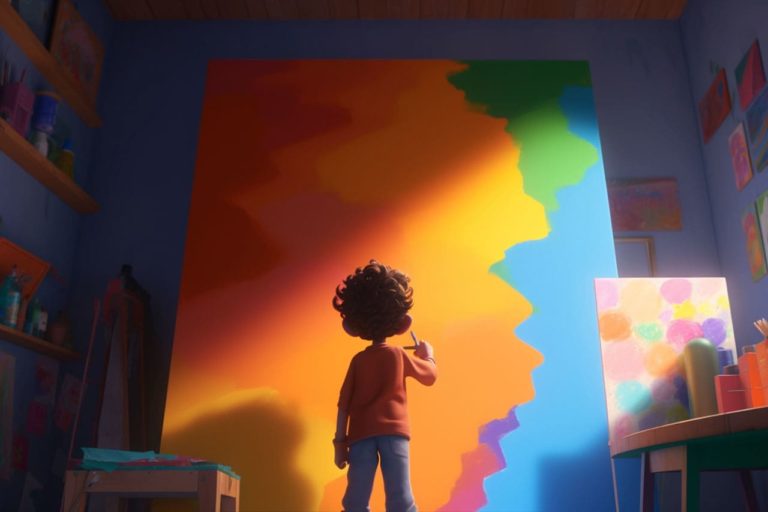Color is one of the most fundamental elements of art, playing a critical role in communicating emotions, ideas, and concepts. In contemporary art, artists continue to experiment with color, pushing the boundaries of traditional techniques and exploring new ways to use color to convey meaning and create impact. In this article, we’ll explore the use of color in contemporary art, examining the ways in which artists are using color to create powerful and evocative works of art.
The Emotional Impact of Color
Color is often used in art to evoke emotions and create mood. In contemporary art, artists continue to experiment with color, using it to convey a range of emotions and experiences. For example, artists may use warm, bright colors to convey happiness and joy, or cool, muted colors to evoke sadness or melancholy. In some cases, artists may use color in unexpected ways, using bold or contrasting colors to create tension or discord.
The Symbolism of Color
In addition to its emotional impact, color is often used in art to convey symbolic meanings and ideas. In contemporary art, artists continue to explore the symbolic potential of color, using it to represent a range of concepts and themes. For example, red may be used to represent passion or danger, while blue may represent calmness or tranquility. In some cases, artists may use color to challenge or subvert traditional symbolic meanings, using unexpected color combinations or unconventional uses of color.
Color and Perception
Color is also closely tied to perception, with different colors and combinations of colors affecting the way we see and experience the world around us. In contemporary art, artists continue to experiment with color, exploring the ways in which it can alter our perception of a work of art or create new and unexpected visual experiences. For example, artists may use contrasting colors or unusual color combinations to create optical illusions or to play with the viewer’s sense of depth and perspective.
The Use of Technology in Color
In recent years, advances in technology have allowed artists to explore new ways of working with color, from digital manipulation to the use of new materials and techniques. In contemporary art, artists are using technology to create works of art that are more vibrant, complex, and nuanced than ever before. For example, digital artists may use software to create intricate patterns and designs, while sculptors may use new materials and techniques to create works of art that play with light and color in unique and unexpected ways.
Conclusion
Color is a powerful tool in contemporary art, allowing artists to convey emotion, symbolize ideas, and create new and unexpected visual experiences. Whether through traditional techniques or new technologies, artists continue to experiment with color, pushing the boundaries of what is possible and creating works of art that are both beautiful and meaningful.
Frequently Asked Questions
Q: What is the role of color in contemporary art?
A: Color plays a critical role in contemporary art, allowing artists to convey emotions, symbolize ideas, and create new and unexpected visual experiences. It is a fundamental element of art that is used in a variety of ways to communicate meaning and create impact.
Q: How do artists use color to convey emotions?
A: Artists may use warm, bright colors to convey happiness and joy, or cool, muted colors to evoke sadness or melancholy. In some cases, artists may use color in unexpected ways, using bold or contrasting colors to create tension or discord.
Q: What is the symbolic potential of color in contemporary art?
A: Color is often used in contemporary art to represent a range of concepts and themes. For example, red may be used to represent passion or danger, while blue may represent calmness or tranquility. In some cases, artists may use color to challenge or subvert traditional symbolic meanings, using unexpected color combinations or unconventional uses of color.
Q: How does color affect our perception of a work of art?
A: Different colors and combinations of colors can affect the way we see and experience a work of art. In contemporary art, artists may use contrasting colors or unusual color combinations to create optical illusions or to play with the viewer’s sense of depth and perspective.
Q: How has technology influenced the use of color in contemporary art?
A: Advances in technology have allowed contemporary artists to explore new ways of working with color, from digital manipulation to the use of new materials and techniques. This has allowed for the creation of works of art that are more vibrant, complex, and nuanced than ever before.
Q: Why is color an important element of contemporary art?
A: Color is a powerful tool in contemporary art, allowing artists to communicate emotions, ideas, and concepts in a way that is both immediate and evocative. It is a fundamental element of art that has the ability to capture and hold our attention, creating works of art that are both beautiful and meaningful.
